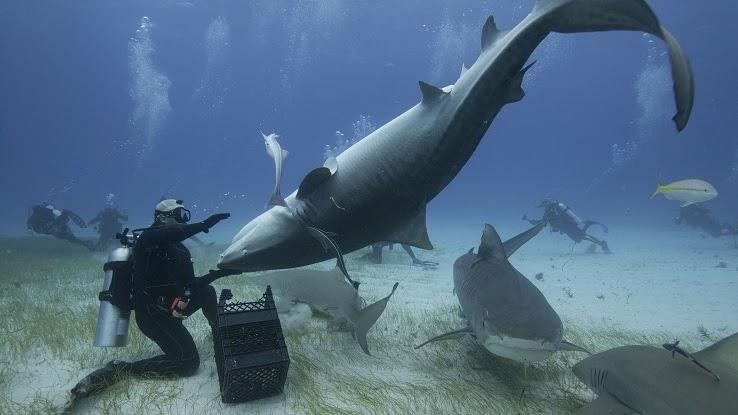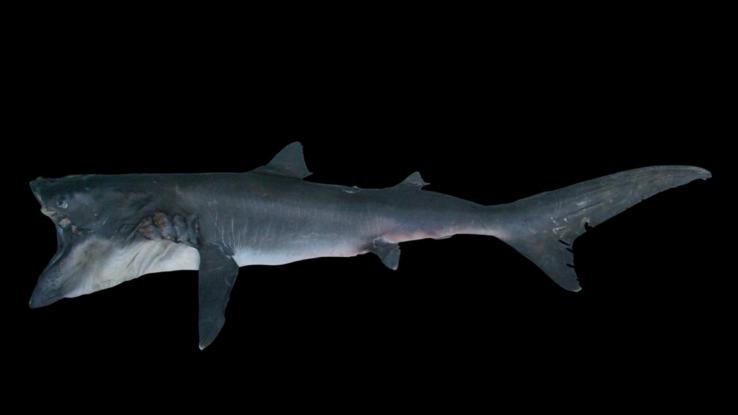Shark Week: Shark Info for Kids Who Are Fascinated By These Fish

While we wish that Shark Week happened more than once a year, there’s plenty of shark content for kids to watch — and we’re bringing shark info for kids to read in the form of some fun factoids. While we eagerly wait for Shark Week 2022, shark lovers of all ages want to learn everything they can about their favorite fish. (Yup, they really are fish.)
Plenty of people know that sharks feel like sandpaper, and that they grow and lose thousands of teeth in a lifetime, but we’ve rounded up some lesser-known facts. Ever wondered about the relationship between sharks and electricity, for example? We’ve got you covered. Let’s dive in!
Sharks Have Electroreceptor Organs
When it comes to aquatic life and electricity, most people think of eels. Sharks can’t exactly shock someone, but they can sense Earth’s electromagnetic fields. How so? Well, sharks are born with electroreceptor organs. These tiny organs may just seem like black spots around sharks’ mouths, eyes, noses to the naked eye, but they’re so much more. The official name for a shark’s electroreceptor organs is Ampullae of Lorenzi. Although this sounds like a Renaissance painter, these are special organs that make sharks particularly sensitive to electromagnetic fields.

The planet’s poles have electromagnetic charges, so sharks are able to sense where they are geographically by recognizing the electromagnetic charge of the water around them. The main benefit? These tiny electroreceptor organs help sharks to migrate.
Ampullae of Lorenzi also make sharks better predators. Electrolytes inside muscles also have an electric charge to them. As a fish swims, charged particles transfer in and out of cell membranes to give the fish’s muscles the necessary power to move forward. Since sharks are sensitive to electric charges, they can almost “smell” this exchange of particles in the water. If anything is moving in the waters near a shark, the shark can sense exactly where they are. In this respect, prey almost becomes more detectable to a shark the faster it tries to swim away.
Interestingly, both the platypus and the Guiana dolphin also have electroreceptor organs.
Shark Embryos Are Extremely Smart
Electroreceptor organs work best when a shark is full-grown, but they do have the ability to sense changes in the electric fields around them during their embryo stage, too. Some sharks give birth to live sharks. Others give birth to egg-like embryos that live in the water until they reach adulthood.

While a baby shark cannot see outside the thick embryo, the early stages of its electroreceptor organs help it sense when would-be predators are near. This defense mechanism gives them the ability to play dead. Usually, the growing, soon-to-be-shark inside the embryo moves around, so, when danger is near, they remain still. This makes it harder for a predator to find them — and ensures that the shark will grow to its next stage.
Cookiecutter Sharks Let Their Prey Live
Sharks are thought of us the ocean’s top predators — merciless killers that attack almost anything and anyone. But that’s simply not the case for all species. Cookiecutter sharks, for example, rarely kill their prey. Similar to the way a cookie-cutter cuts shapes out of cookie dough, a cookiecutter shark bites small circular chunks out of its prey.

While it certainly does not feel good to be bitten, the prey that a cookiecutter shark eats is able to heal and keep on living. How are cookiecutter sharks able to eat this way? For one, their lips have a suction-like property, similar to algae eaters, which allows them to latch onto prey. And, although these are smaller sharks, they have big teeth that allow them to quickly carve a hole in their prey and make a quick getaway. For this reason, experts consider this shark’s eating habits parasitic.
Sharks Go Into Trances
While it definitely wouldn’t be a good idea to intentionally approach a shark in the ocean, experienced marine professionals know a special trick for making their interactions with sharks much safer. When sharks are turned upside down, they go into a trance. This physical phenomenon is called tonic immobility.

Within one minute of being upside down, a series of events happen: the shark’s dorsals find straighten and its breathing slows. During this time, sharks do not respond to any external stimuli. In other words, they seem to be completely unaware of anything around them while upside down. The state of tonic immobility usually lasts for no more than 15 minutes. After that time has passed, the shark flips back over and starts breathing, swimming, and exhibiting awareness again.
Scientists are not sure why tonic immobility happens. While not all shark species experience it, tiger sharks, reef sharks, and lemon sharks all experience this trance-like state. Of course, tonic immobility — also referred to as apparent death — has pros and cons. For example, other marine creatures might take advantage of the shark’s immobility, like this orca, which suffocated a shark by forcing it into repeated cycles of tonic immobility. On the other hand, this trance-like state allows marine biologists to safely help injured sharks without tranquilizers.
Megamouth Sharks Are Hard to Find
The whale shark is known for being the largest shark species in the ocean. But they aren’t the only unique filter feeder out there. In fact, the megamouth shark, which is the smallest of the filter-feeding sharks, is fascinating in its own right. While this shark is rather small, a fully opened megamouth mouth can measure up to four feet wide. Thanks to its large mouth, this shark can eat hundreds of tiny krill in one sitting.

Megamouths are extremely hard to find in the wild; scientists first made note of them in the late 1970s, and there have been less than 50 sightings since then. Megamouths are unique for other reasons, too. For example, they practice vertical migration, which means they live and hunt in different depths of the sea — and that’s also what makes them so hard to find.
Without a doubt, sharks are some of the most diverse, fascinating creatures Earth’s oceans have to offer. And while Shark Week reminds us of these unique fish — and provides a ton of exciting shark info for kids and adults alike — this serves as a reminder to learn more about these thrilling creatures all year long.





